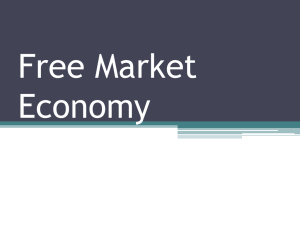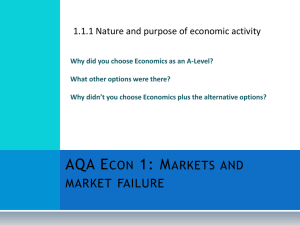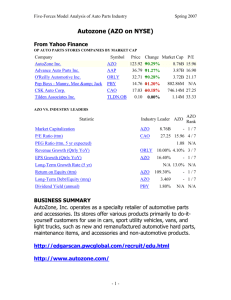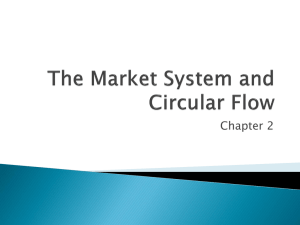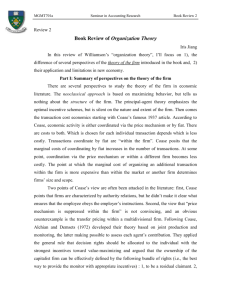Lecture notes 2 - of Paul D. Deng
advertisement
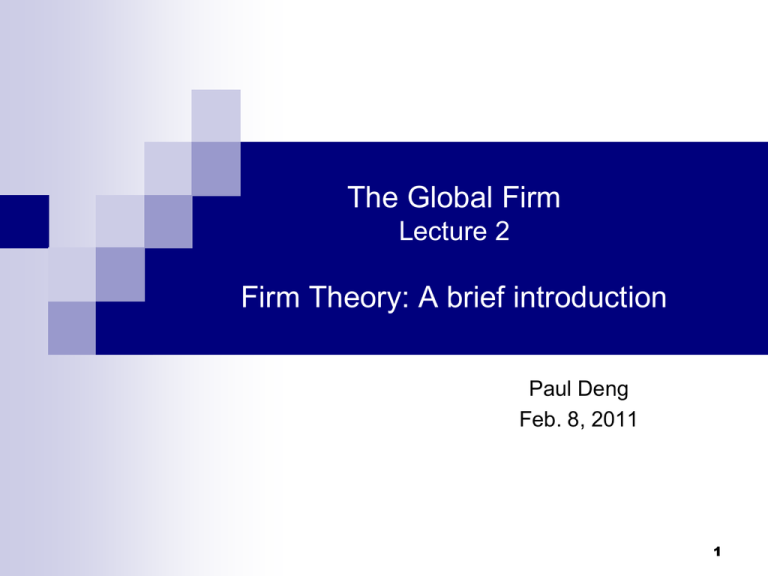
The Global Firm Lecture 2 Firm Theory: A brief introduction Paul Deng Feb. 8, 2011 1 Big Picture 2 Introduction Economic theories have plenty to say about how the market works, but much less about firms, especially the inside of a firm Firms are frequently treated as a production black-box: input firm output In the second half of the 20th century, there has been some big advancement in firm theory, but our understanding toward firms still remain quite rudimentary relative to other fields of economics In the past, economists have been trying to figure out a few important questions 3 Fundamental Issues about Firms Why do firms exist? How different are firms versus markets? What determines firm’s scope or boundaries?, such as incentives for M&As Spin-offs Alliances What determines firm’s organizational forms? Corporations, partnership, proprietary Chain stores, franchises, alliances For MNEs: Subsidiaries vs. joint-ventures; horizontal vs. vertical FDIs; Why R&D is mostly done at headquarters 4 Outline of the Theoretical Progress Ronald Coase (1937), The Nature of the Firm Principal-agent theory Oliver Williamson and transaction cost economics (or TCE) Oliver Hart and property rights theory of the firm 5 Coase 1937 Why do firms exist? Cetain things firms do better than markets Transaction cost matters, e.g., search cost – labor, parts inventory haggling cost – labor contract contracting cost – wage coordination cost – working colleagues vs. strangers Accroding to Coase, When the transaction costs through market exchange are high, it may be less costly to coordinate production through a formal organization than through a market. The boundaries of the firm occur at the piont where the marginal benefit (transaction cost savings) equal marginal cost of firm activities, such as the error and rigidity from a centralised authority, i.e., when MB = MC 6 Principal-Agent Theory Like neoclassical theory, princial-agent theory still views firm as a production set But professional managers (or agent) make decisions, rather than the owner (or principal) – the separation of management and ownership An important theory to understand how incentive works inside a firm, but fails to explain what defines a firm, its nature and scope. Nontheless, offers some deep insights into optimal incentive schemes whithin a firm, especially in explaining why state (or publicly) owned firms will always tend to under-perform the private ones – one of the most important reasons for the demise of socialist economies. 7 Williamson and TCE Further development of Coasian idea of transaction costs Core idea: relationship-specific investments, in other words, investments of the two parties are locked-in, e.g., auto maker and its specialized parts supplier electricity generation plant and the adjacent coal mine Without integration, The two parties sign contract, and follow through it When business condition or circumstance changes, they then engage in ex post negotiations – remember, contract will always be incomplete ex post, no matter how detailed it was written ex ante. There are risks and costs involved – what if the auto maker stops buying from the parts supplier or the supplier suddenly demands a riduculously high price? The nature of incomlete contract and the cost of ex post negotiations provide strong incentives to integrate; Otherwise, it tends to lead to under investment ex ante 8 Hart: Property Rights Theory of the Firm Further improvement on Williamson’s TCE approach --- it analyzes the mechanism of how integration reduces opportunism ex post Hart views firms as a set of property rights, and he introduces two important concepts: residual rights control (ex post) Holdup When contracts are imcomplete, as almost always the case, owning the assets (or integration) gives one party full claim (control) of the residual rights ,thus removing the holdup problem. 9 Case Study of Property Rights Approach GM and Fisher Body Fisher supplies car bodies to GM under contract. There is a sudden increase of car demand out of the stipulation of the contract, and GM wants an increase of supply of car bodies from Fisher to meet the demand shock. Since Fisher is an independent company, it may refuse to do so or it demands a much higher price – remember, this sudden change of demand was not foreseen by anyone when the contract was nogotiated. In other words, now Fisher Body can hold up supply in order to get a higher price – the claim to these unforseen benefits are called residual rights. This is definitely not the situation GM wants to be in. To remove similar contract uncertainties that may potentially disrupt its production, GM has every incentive to integrate or merge with Fisher Body. 10 Limitations Holmstrom and Roberts (1998) Property rights theory of the firm predicts owning assets as a way to resolve holdup problem, but in practice, a lot of M&As took place without large assets involved. Why? Some phenomena can’t be explained using Hart’s property rights approach: US integration vs. Japanese subcontracting in auto industry Airline alliances 11 Limitations Holmstrom and Roberts (1998) Japanese subcontracting in auto industry Repeated game vs. one-shot game Long-term reputation matters Supplier won’t hold up because they bear long-term relationship in mind Plus, there are only a few limited suppliers per auto maker. In other words, if suppliers behave, their contract with auto maker is guaranteed in the long term. The role of associations to mitigate information asymmetry Auto maker won’t cheat on supplier either because suppliers form association and make the price information between auto maker and suppliers very transparent 12 Limitations Holmstrom and Roberts (1998): More than just investment incentives Agency problems: Other incentives for ownership Case study: IKEA and its shipping subcontractor Market monitoring as incentives for spinoffs Workers for the shipping co. are not on IKEA’s payroll IKEA customers with quite unpleasant delivery experience How could customer’s satisfaction be improved? Self owning and monitoring vs. spinoff and market monitoring Market does a better a job in monitoring – incentives for spinoff Knowledge capital R&D headquarters Wholly owned subsidiaries instead of licensing or joint ventures. 13 Next time... Start to read Friedman’s “the methodology in positive economics” Ethier, 1986, “the multinational firm” 14

